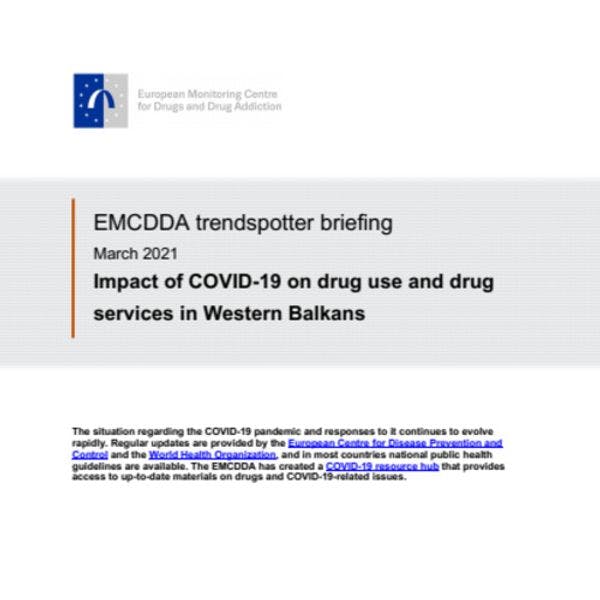Briefing de l’OEDT sur les tendances : L’impact du COVID-19 sur l’usage de drogues et les services en lien avec les drogues dans les Balkans occidentaux
LOEDT décrit les principaux effets des restrictions relatives au COVID-19 sur la population des usagers de drogues et sur l’offre et la demande de services liés aux drogues. Pour en savoir plus, en anglais, veuillez lire les informations ci-dessous.
The Western Balkans (Albania, Bosnia and Herzegovina, Kosovo*, Montenegro, North Macedonia and Serbia) registered the main waves of COVID-19 infections later than most of the EU countries, but containment strategies were implemented at the same time and with equal force as in the rest of Europe. The EMCDDA initiated a series of studies using the trendspotter methodology to explore the impact of the pandemic and associated measures on drug services and people who use drugs in the Western Balkan region.
The main findings are listed below:
1. Use of alcohol, benzodiazepines, and cocaine was reported to have increased in some sub-populations of people who use drugs. Use of benzodiazepines in combination with opioids was among the common risk behaviours observed during the first weeks of lockdown.
2. A number of harms were observed among marginalised and injecting drug users, who in some cases lacked resources to satisfy basic needs. Mental health problems were reported among both recreational and problem drug users.
3. The provision of drug treatment was reduced during the first weeks of the pandemic, affecting mainly new admissions and services provided face to face.
4. The number of people entering treatment declined between March and May 2020 in almost all countries in the Western Balkan region.
5. Opioid substitution treatment (OST) centres and harm reduction services mainly remained operational, although under a restricted regime.
6. The main adaptations to the new situation included use of telemedicine and a relaxation of OST distribution schemes.
7. Personal protection measures became standard in all treatment and harm reduction facilities, and protective equipment was distributed to clients whenever possible.
The crisis highlighted the fragile position of some service providers and the reliance of harm reduction services on the support of international donors.
